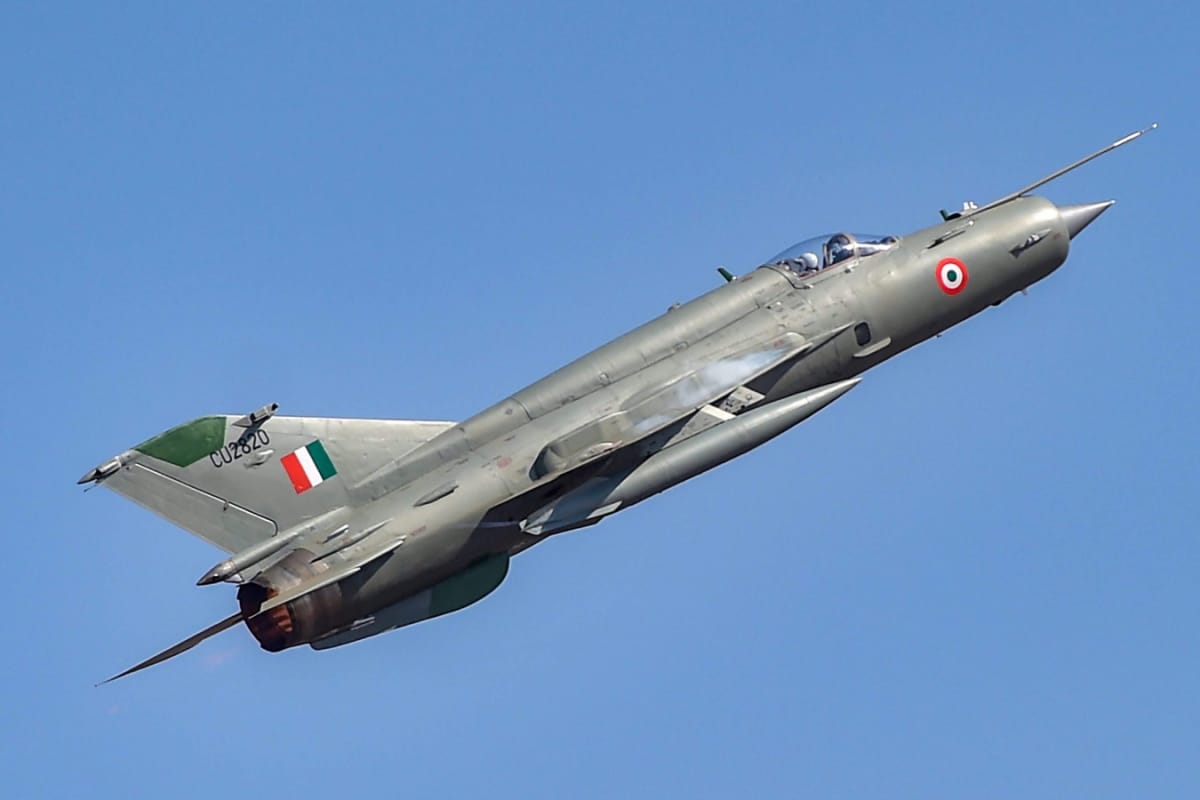

The MiG-21, a supersonic jet fighter and interceptor aircraft designed by the Mikoyan-Gurevich Design Bureau in the Soviet Union, has a long and storied history with the Indian Air Force (IAF). Inducted into service in 1963, the MiG-21 became the first supersonic fighter jet in the IAF, marking a significant shift in India's air power capabilities. The IAF's decision to acquire the MiG-21 in 1961 was a strategic one, opting for the Soviet aircraft over Western competitors due to the Soviet Union's offer of full technology transfer and local assembly rights. Over the years, the IAF inducted more than 1,200 MiG-21s, with a significant number being license-built by Hindustan Aeronautics Limited (HAL). At its peak, the IAF operated around 400 MiG-21s across 19 squadrons.
The MiG-21's legacy is intertwined with the various conflicts India has participated in, most notably the Indo-Pakistani Wars. While its initial role in the 1965 war was limited due to small numbers and insufficient pilot training, the IAF gained valuable operational experience. The 1971 war, however, saw the MiG-21 rise to prominence. It played a crucial role in achieving air superiority over vital points and areas, particularly in the western theater of the conflict, thus proving its capabilities during the Bangladesh Liberation War. The initial supersonic aerial combat in the subcontinent occurred in this war, with a MiG-21FL claiming a Pakistan Air Force (PAF) F-104A Starfighter using its GSh-23 twin-barrelled 23 mm cannon. By the end of the hostilities, IAF MiG-21FLs had claimed several PAF aircraft, including four F-104As, two Shenyang F-6Cs, one North American F-86F Sabre, and one Lockheed C-130E Hercules. Western analysts noted that the MiG-21FLs had clearly won the aerial combat against the F-104A Starfighter. The MiG-21 was also deployed in the Kargil War for close air support and interdiction, targeting Pakistani bunkers and supply lines.
The F-104 Starfighter, while possessing speed and altitude advantages, was outmaneuvered by the MiG-21 in the hands of skilled IAF pilots. The MiG-21's superior turn rate and flight characteristics gave it an edge in dogfights. The F-104, also known as the "Widowmaker", was supplied to Pakistan amidst India's anxiety about the country's need for a supersonic aircraft in 1963.
The success of the MiG-21 in the 1971 war led several nations, including Iraq, to seek MiG-21 pilot training from India. By the early 1970s, the IAF was training over 120 Iraqi pilots. The MiG-21's effectiveness against the F-104 and other PAF aircraft solidified its reputation as a formidable fighter jet.
However, the MiG-21's service has not been without its challenges. The aircraft has been plagued by safety concerns, earning it the nickname "Flying Coffin". Over the years, numerous accidents have resulted in the loss of pilots and civilian lives. Factors contributing to these accidents include poor maintenance, the quality of replacement parts, and the engine's sensitivity to foreign object damage.
Despite its safety record, the MiG-21 has remained a vital asset to the IAF for several decades. The IAF has recognized the MiG-21 as an "immense asset" for over a quarter century, acknowledging its role in mitigating the "quantity vs quality dilemma" faced by many air forces. The MiG-21 has participated in various conflicts, including the 1999 Kargil conflict and the 2019 Balakot airstrike. In 2019, a MiG-21 Bison, piloted by Wing Commander Abhinandan Varthaman, reportedly shot down a PAF F-16 during an aerial engagement.
As of 2024, approximately 40 MiG-21s remain in operation with the IAF. However, the IAF is phasing out the MiG-21, with the remaining squadrons scheduled to retire in September 2025. The phase-out ceremony will be held at the Chandigarh Air Base, where the first MiG-21s arrived in 1963. The MiG-21s are being replaced by the indigenously built Tejas Mk-1A fighter jet. The retirement of the MiG-21 marks the end of an era for a platform that has served the IAF for over six decades. The aircraft's legacy as a war-winning machine is tempered by its safety record, but it remains an aviation classic.